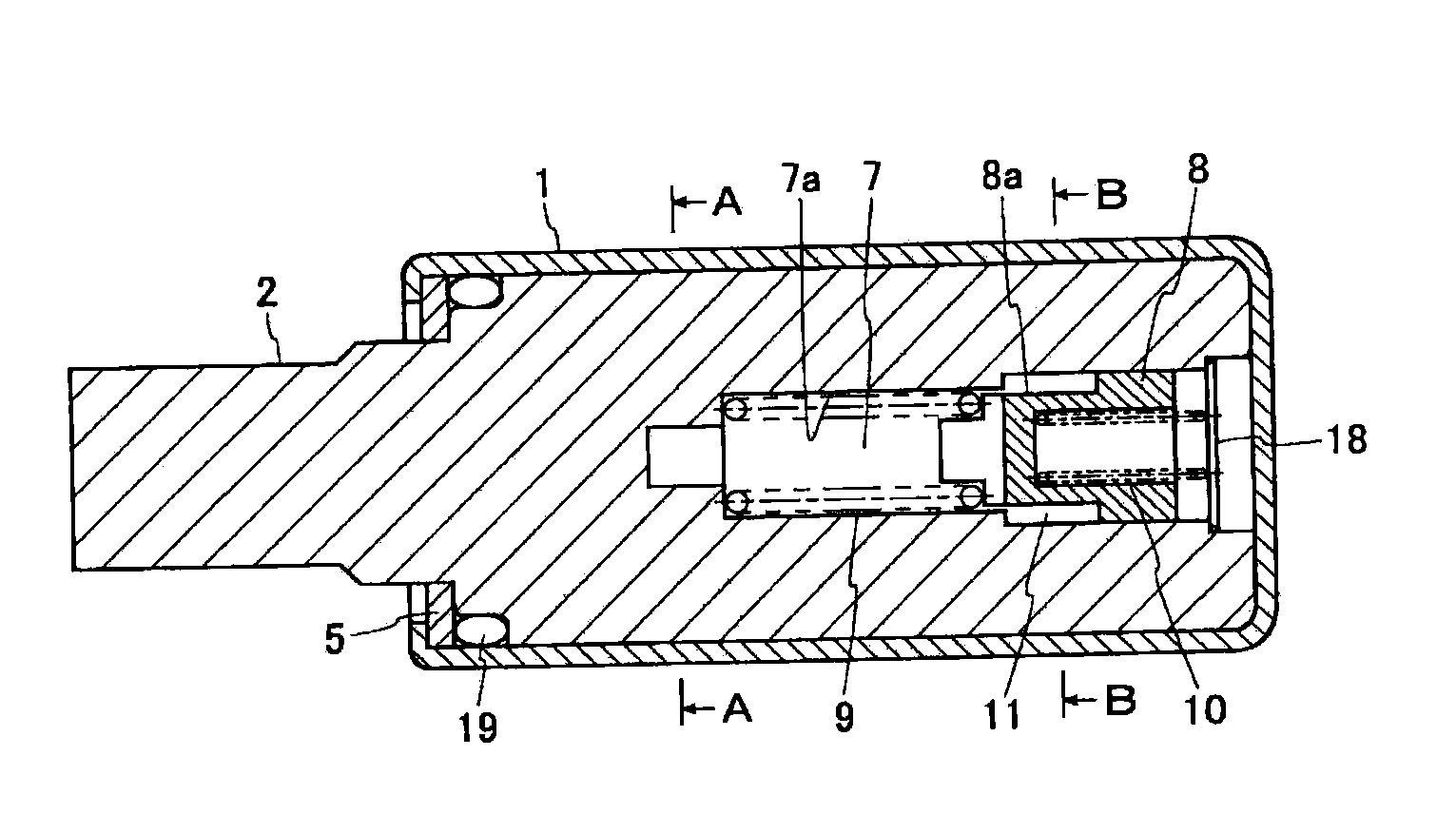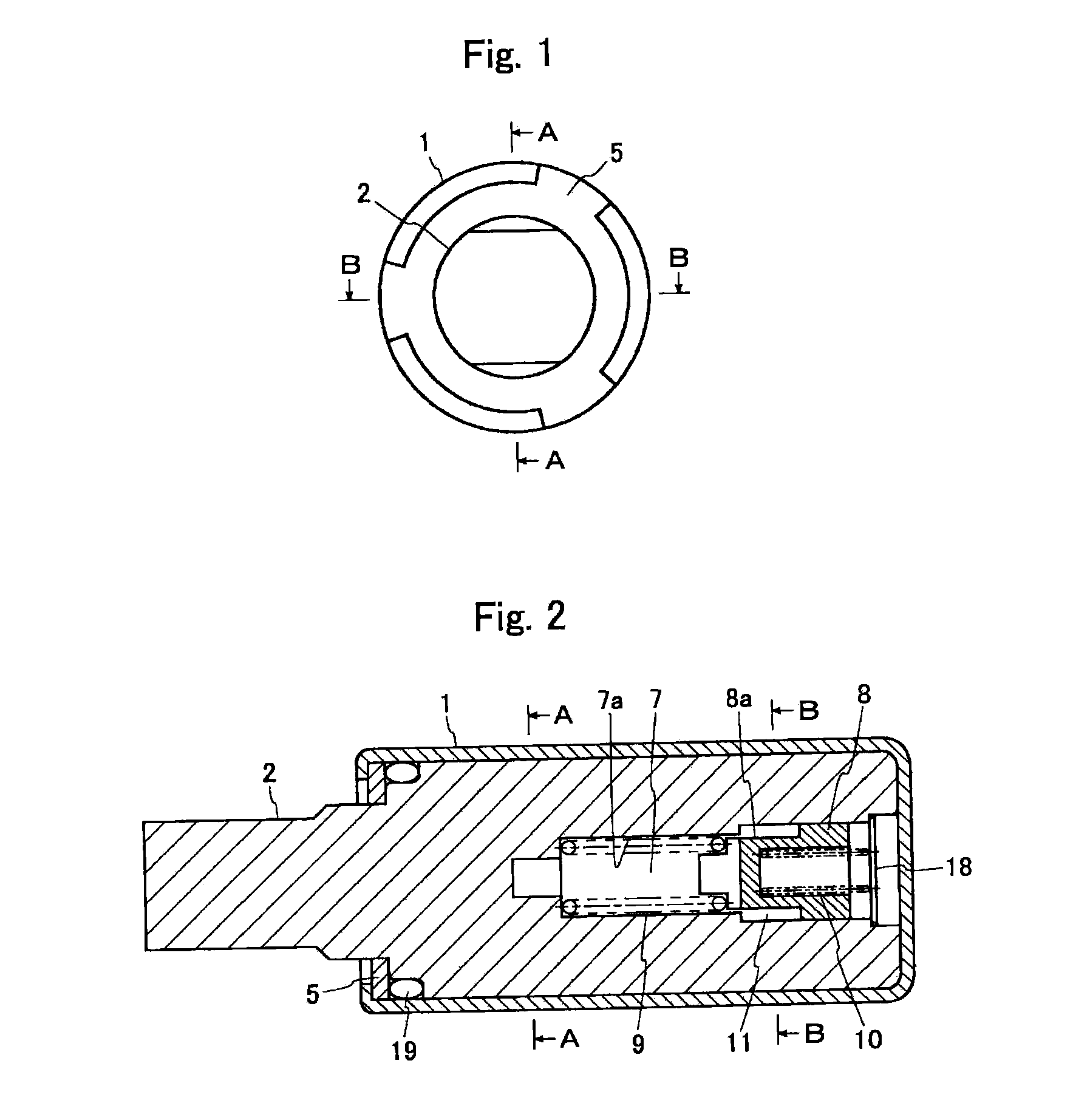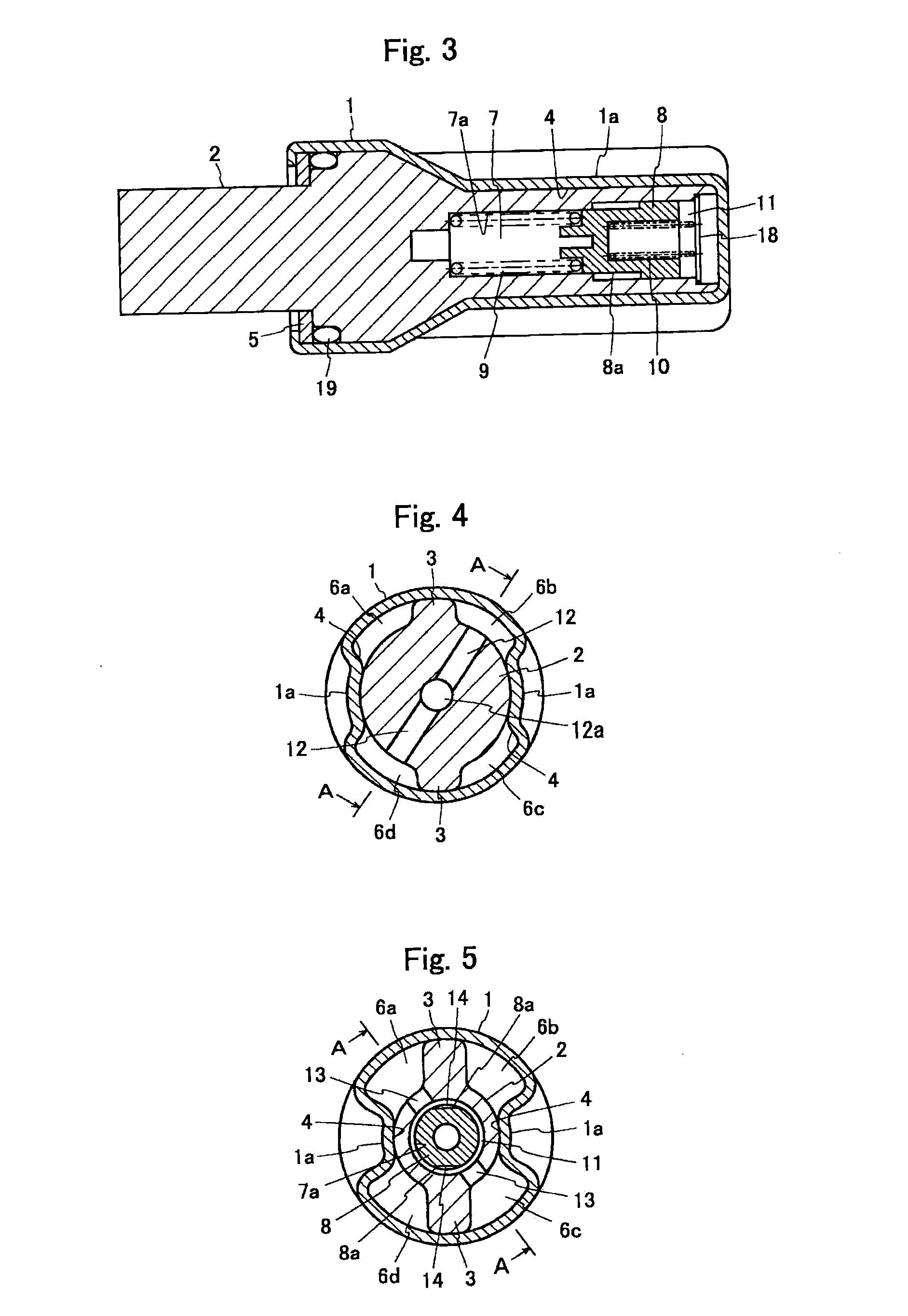Rotary Damper
a damper and rotary technology, applied in the direction of liquid based dampers, shock absorbers, mechanical instruments, etc., can solve the problems of small load range to be coped, valve body abrupt deformation, fluid passage closure, etc., to reduce braking force, enhance yield, and increase load cope
- Summary
- Abstract
- Description
- Claims
- Application Information
AI Technical Summary
Benefits of technology
Problems solved by technology
Method used
Image
Examples
first embodiment
[0116]FIGS. 1 to 7 show a rotary damper according to a first embodiment of the present invention. As shown in these drawings, the rotary damper of the embodiment includes a casing 1, a shaft 2, vanes 3, division walls 4 and a valve mechanism.
[0117]The casing 1 is hollow, one end thereof is opened and the other end is closed. The opening of the casing 1 is closed with a lid 5. The lid 5 is mounted by crimping an end of the casing 1. The casing 1 includes division walls 4 which divide a space formed between the casing 1 and the shaft 2. The casing 1 and the division walls 4 are integrally formed by press working. Recesses 1a are formed in division wall forming sections. The recess 1a functions as the coupling section (see FIGS. 3 to 5). Viscous fluid such as silicon oil is charged into the casing 1.
[0118]The shaft 2 is provided in the casing 1 such that the shaft 2 can rotate relative to the casing 1. The shaft 2 is integrally formed with the vanes 3. Four chambers 6a to 6d (a first c...
second embodiment
[0135]A rotary damper of a second embodiment is different from the rotary damper of the first embodiment in the shape of the valve body 8. That is, the valve body 8 of the second embodiment is provides at its outer periphery with a tapered surface 8b as shown in FIGS. 14 and 15.
[0136]FIG. 14 shows a state before the valve body 8 forwardly moves in the operating chamber 7. FIG. 15 shows a state after the valve body 8 forwardly moves in the operating chamber 7. As shown in these drawings, according to the valve mechanism having such a valve body 8, as the moving distance of the valve body 8 which forwardly moves in the operating chamber 7 is increased, the area of the flow path 14 formed between the wall surface of the peripheral wall 7a of the operating chamber 7 and the tapered surface 8b formed on the valve body 8 is reduced. With this, the reducing amount can be increased. Thus, the second embodiment can also exhibit the same effect as that of the first embodiment.
third embodiment
[0137]In a rotary damper of a third embodiment, the shape of the valve body 8 is different from that of the rotary damper of the first embodiment. That is, the valve body 8 of the third embodiment is provided at its outer periphery with a substantially V-shaped groove 8c as shown in FIG. 16.
[0138]According to the valve mechanism having such a valve body 8, as the moving distance of the valve body 8 which forwardly moves in the operating chamber 7 is increased, the area of the flow path 14 formed between the wall surface of the peripheral wall 7a of the operating chamber 7 and the groove 8c formed in the valve body 8 is reduced. With this, the reducing amount can be increased. Thus, the third embodiment can also exhibit the same effect as that of the first embodiment.
PUM
 Login to View More
Login to View More Abstract
Description
Claims
Application Information
 Login to View More
Login to View More - R&D
- Intellectual Property
- Life Sciences
- Materials
- Tech Scout
- Unparalleled Data Quality
- Higher Quality Content
- 60% Fewer Hallucinations
Browse by: Latest US Patents, China's latest patents, Technical Efficacy Thesaurus, Application Domain, Technology Topic, Popular Technical Reports.
© 2025 PatSnap. All rights reserved.Legal|Privacy policy|Modern Slavery Act Transparency Statement|Sitemap|About US| Contact US: help@patsnap.com



